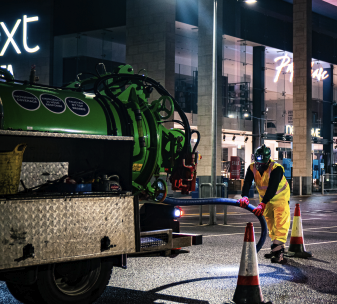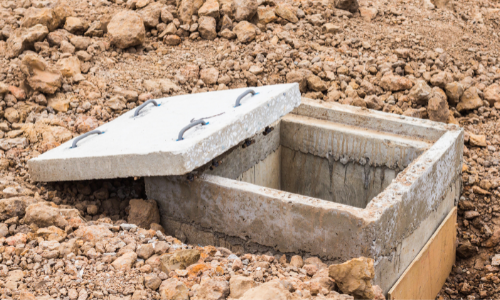
Drain Inspection Chambers
Drain inspection chambers, also known as manholes, are access points to underground drains. They are an important part of drainage systems as they give drainage professionals access to utilities infrastructure. Allowing them to inspect and survey the pipework, and perform essential repairs or cleaning work, such as removing blockages.
Where Is a Drain Inspection Chamber Found?
The design, location and structure of drain inspection chambers are governed by UK building regulations (Part H). Some key points in the drainage system where a chamber should be located:
- Where a drain or sewer pipe changes direction horizontally by more than 30 degrees
- When there’s a change in pipe diameter
- Where there is a major junction from other sewers
As well as being designed to allow access for a drainage engineer, they can also be used to perform CCTV surveys, drain jetting to remove blockages and other services.
There are varying sizes of drain inspection chambers, and it depends on the use and location of the drain. Some can be less than a metre deep, and others can be many metres below ground requiring ladders to be accessed. The drain, or manhole, covers also vary in shape and size depending on the type of pipe and where they are located. In locations where traffic or heavy vehicles regularly pass over the cover, larger, thicker and more robust covers are needed. Larger access points may be protected by steel security grills to prevent unauthorised access and stop items from being dropped, whereas smaller ones may have plastic covers. There are also guidelines about the markings on these covers, standard code outlines that they should be colour coded depending on the type of water in the drain; as well as an arrow to show the direction of flow.
There are smaller drain inspection chambers available, known as rodding points or remote access drainage points. These are too small for a person to fit but they allow access for drainage equipment such as rods, jets or CCTV cameras to be inserted. These rodding points are sometimes used to replace inspection chambers as they are cheaper to install, but they restrict manual access to the pipes.
As well as allowing access to the pipes for servicing and repair, drain inspection chambers can also help to prevent flooding. They act as a temporary storage point for excess liquid, allowing it to build up instead of immediately flow out.
It’s important to ensure that they are kept easily accessible and not blocked, in case of emergency. If they do become blocked or damaged, it can cause significant damage to the property. Inaccessible or inoperable chambers can make it impossible to inspect or clean a drain, and damaged chambers can lead to debris and excess water seeping into the drainage system.
How to Access a Drain Inspection Chamber
If a repair or replacement is needed, it is important to never attempt this manually. Simply climbing in and out of a chamber is dangerous work, as they are often full of toxic gases or limited oxygen. Cleaning methods such as high-pressure water jetting or suction are recommended, and should only be done by a trained professional.
If you have drain inspection chambers on your property, and you would like them cleaned or repaired, our highly trained drainage engineers are on hand to help you. Click here to find your local engineers.

Talk to your local Metro Rod specialist
We are always happy to arrange a free site assessment and no obligation quotations for any work you might need. Alternatively, you can call our emergency hotline number on 0800 66 88 00
Get in touch Drainage Services
